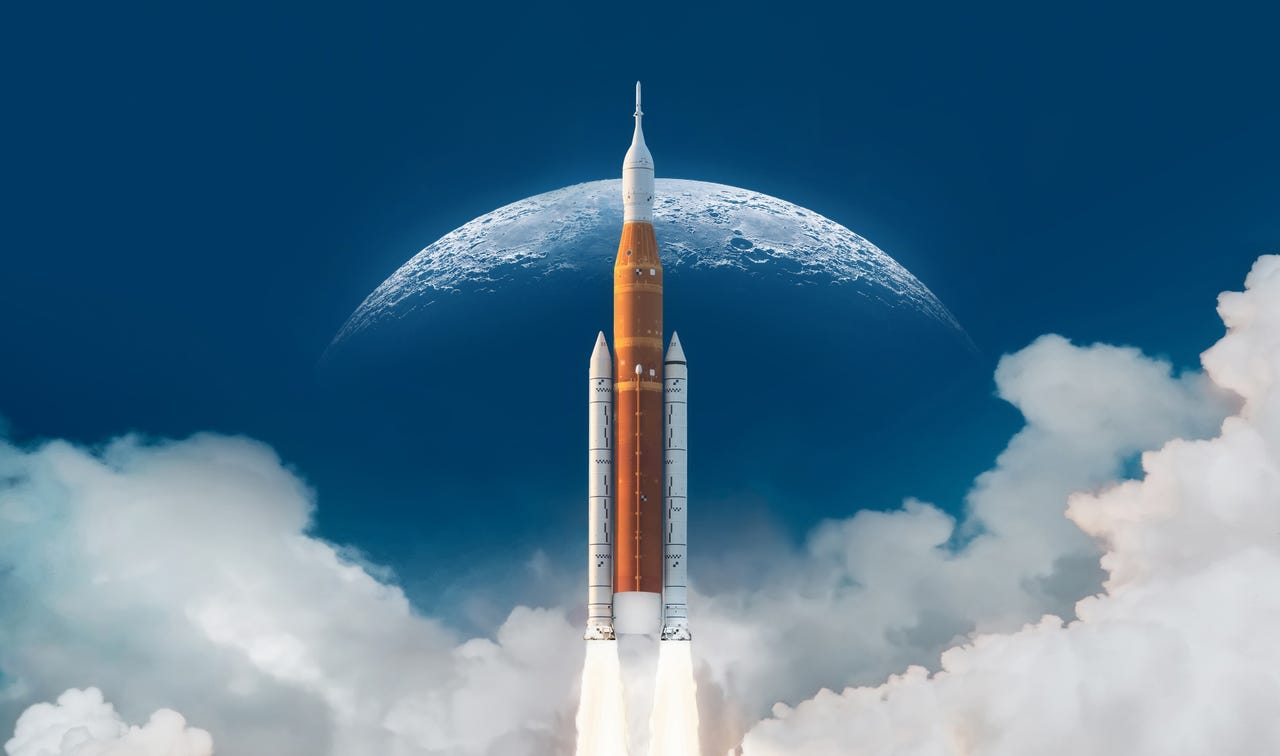After the Moon flyby, what's next for NASA's Artemis I Orion spacecraft?


NASA's uncrewed Artemis I Orion spacecraft has completed its powered flyby of the Moon and is now headed into a fuel-saving distant retrograde orbit (DRO) for the next few weeks before returning to Earth.
Orion's fuel-burned propulsion by the moon happened about 81 miles above the surface at 6:57am CST on Monday. NASA has now tested all three thruster types in the following order: the large orbital maneuvering system engine, the small reaction control system thrusters, and the medium-sized auxiliary engines.
Space
The burn used in the flyby of the Moon increased Orion's speed from 2,128 mph to 5,102 mph, shortly after passing 1,400 miles above the Apollo 11 landing site, Tranquility Base, where Neil Armstrong and Buzz Aldrin landed in July, 1969.
Also: What is Artemis? Everything you need to know about NASA's new moon mission
Mike Sarafin, Artemis I mission manager, said in a briefing on Monday that the next key dates for decision making will happen from November 30, when the team will discuss Orion departing the DRO, which is scheduled for December 1, followed by the return powered flyby on December 5.
On December 5, NASA and the US Navy will decide details about deploying the recovery forces. A joint US Navy and NASA team will depart on a ship from Naval Base San Diego. The ship will depart around December 6 for the unspecified recovery zone in the Pacific Ocean. On December 8, the organisations will pick an exact landing site in the Pacific Ocean.
More immediately, this Friday, November 25th, Orion will enter its DRO, which is at a high altitude from the surface of the Moon, and "retrograde" because it travels in the opposite direction than the Moon orbits Earth.
DRO is highly stable because objects are balanced between the gravitational pull of Earth and the Moon. It allows Orion to reduce fuel consumption and remain in position while traveling around the Moon, according to NASA.
Monday's two-and-a-half minute burn in the flyby over the Moon started Orion's entry into DRO. NASA reports that after that burn, 3,715.7 pounds of propellant had been used. The next burn is planned for November 30, when it departs DRO.
"There are 2,112.2 pounds of margin available over what is planned for use during the mission, an increase of 201.7 pounds from prelaunch expected values," NASA notes.
While in DRO, Orion will reach its farthest point from the Moon on November 25, when it will be about 57,287 miles beyond the Moon. On November 26, Orion will be 248,655 miles from Earth, beating the record set by Apollo 14 for the farthest distance travelled by a spacecraft designed for humans. On Monday November 28, it will reach its maximum distance from Earth of 268,552 miles.
NASA aims to launch a crewed spacecraft in future Artemis missions planned for the next decade.